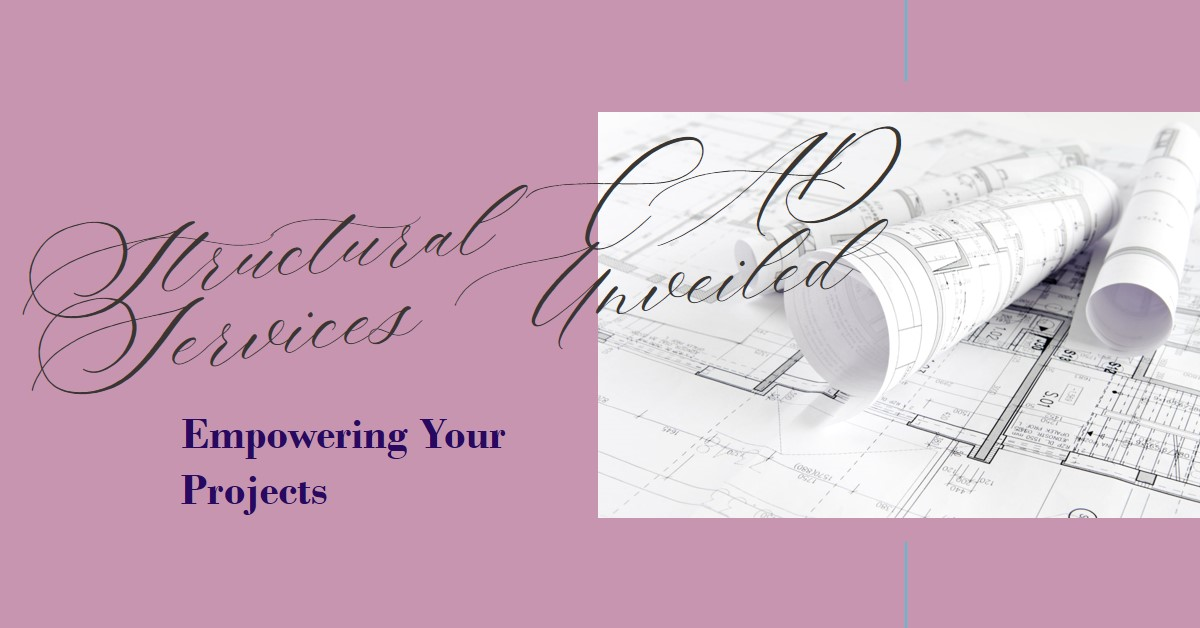In the ever-evolving landscape of architecture and construction, precision and accuracy have become paramount. The advent of technology has ushered in a new era, reshaping the way we conceive, design, and construct structures. Among the myriad tools that have played a pivotal role in this transformation, Structural CAD (Computer-Aided Design) services stand out as the backbone of modern engineering endeavors.
Understanding Structural CAD Services
At its core, Structural CAD services involve the use of computer software to create detailed and accurate representations of architectural and engineering designs. Unlike traditional drafting methods, CAD allows for dynamic and interactive modeling, enabling designers and engineers to visualize and analyze structures in three dimensions. This not only enhances the overall design process but also facilitates seamless collaboration between different stakeholders involved in a project.
The transition from conventional drafting to Structural CAD services has revolutionized the way professionals approach design and construction. With a myriad of powerful tools and features, CAD software has become an indispensable asset for architects, engineers, and construction teams.
Precision in Design with Structural CAD Services
Optimizing Structural Analysis through CAD
One of the pivotal aspects of structural engineering is the analysis of a design’s stability and integrity. Structural CAD services facilitate this through advanced analysis tools embedded in the software. These tools assess factors such as load distribution, stress points, and material strength, ensuring that the proposed design meets all safety and regulatory standards.
Iterative Design Process for Perfection
Structural CAD services empower engineers to engage in an iterative design process. Unlike traditional methods, where modifications were laborious and time-consuming, CAD allows for quick and efficient changes. This iterative approach ensures that each aspect of the design is scrutinized and refined until optimal precision is achieved.
Integration of Building Information Modeling (BIM)
The integration of Building Information Modeling (BIM) within structural CAD services marks a significant stride in design precision. BIM goes beyond 3D modeling by incorporating additional data layers, such as material specifications, cost estimates, and construction timelines. This holistic approach provides a comprehensive understanding of the project, enabling better decision-making throughout the entire construction lifecycle.
The Advantages of Structural CAD Services
One of the primary advantages of employing Structural CAD services is the precision it offers. The ability to create detailed and accurate 3D models allows designers to identify potential issues and make necessary adjustments before construction begins. This not only reduces the likelihood of errors but also streamlines the entire construction process, ultimately saving both time and resources.
Furthermore, the versatility of Structural CAD services goes beyond mere visualization. Engineers can conduct thorough simulations and analyses, assessing factors such as structural integrity, load distribution, and material strength. This data-driven approach enables informed decision-making and enhances the overall efficiency and safety of the construction process.
3D Modeling: Bringing Designs to Life
Central to Structural CAD services is the concept of 3D modeling. This transformative technology allows designers to create realistic, three-dimensional representations of their visions. The ability to view a structure from different angles and perspectives provides a comprehensive understanding of the design, helping identify potential challenges and areas for improvement.
Moreover, 3D modeling in Structural CAD services allows for virtual walkthroughs and visualizations, offering clients and stakeholders a realistic preview of the final product. This not only enhances communication but also empowers clients to actively participate in the design process, ensuring that the end result aligns with their expectations.
Collaboration and Coordination
In the realm of construction and engineering, collaboration is key to success. Structural CAD services facilitate seamless collaboration by allowing multiple stakeholders to work on the same project simultaneously. This real-time collaboration ensures that all parties involved are on the same page, reducing the likelihood of miscommunication and errors.
Additionally, the ability to share models and designs digitally fosters efficient coordination between architects, structural engineers, and construction teams. Changes made by one party are instantly reflected in the shared model, creating a dynamic and synchronized workflow that significantly enhances project efficiency.
Optimizing Structural CAD Services for Varied Projects
Structural CAD services are versatile and can be tailored to meet the unique requirements of different projects. Whether it’s a small residential structure or a large-scale commercial development, CAD software can adapt to the specific needs and complexities of the project at hand.
For smaller projects, CAD services offer a cost-effective solution, allowing designers to create detailed plans without the need for extensive physical drafts. On the other hand, for larger and more complex structures, the analytical capabilities of CAD become invaluable, providing engineers with the tools to address intricate challenges and optimize the overall design.
The Future of Structural CAD Services
As technology continues to advance, the future of Structural CAD services holds even more exciting possibilities. The integration of artificial intelligence (AI) and machine learning into CAD software is on the horizon, promising enhanced automation and predictive modeling. This not only streamlines the design process further but also opens new frontiers for innovation in architecture and construction.
Furthermore, the incorporation of sustainable design principles into CAD services is becoming increasingly prevalent. Designers and engineers can now analyze the environmental impact of their structures, exploring options for energy efficiency and eco-friendly materials. This sustainability-driven approach aligns with the growing global emphasis on green and sustainable construction practices.
Challenges and Future Trends in Structural CAD Services
Overcoming Learning Curves
While the benefits of structural CAD services are immense, there exists a learning curve associated with transitioning from traditional methods to digital platforms. Training and upskilling are crucial to ensure that professionals harness the full potential of CAD tools. However, once proficiency is attained, the long-term advantages far outweigh the initial challenges.
Conclusion: A Paradigm Shift in Design and Construction
In conclusion, Structural CAD services represent a paradigm shift in the way we conceive, design, and construct structures. From precision and accuracy to collaboration and sustainability, CAD software has become an integral part of the modern engineering toolkit. As we look to the future, the continued evolution of Structural CAD services holds the promise of even more efficient, innovative, and sustainable solutions for the architectural and construction industries.
Explore the possibilities, embrace the power of Structural CAD services, and witness your designs transform into reality with unprecedented precision and efficiency.



